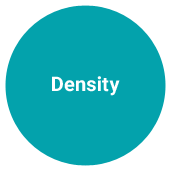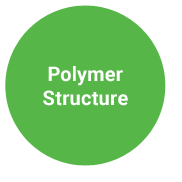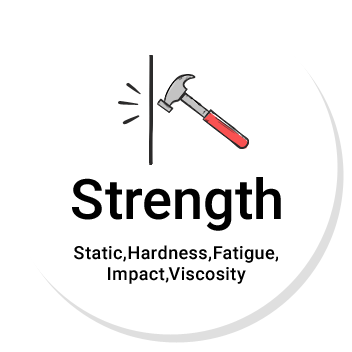Polymer









If the curvature and chamfering are insufficient when forming a part, stress will be generated locally there, resulting in failures. Multifaceted evaluations of strength characteristics and product shapes make it easier to identify the causes of failures.

In creating cast metal and cast iron parts, when the molten metal flows into the mold, the cast metal sometimes cools and hardens with the bubbles that arose inside the molten metal intact. The bubbles in the cast metal have poor mechanical characteristics in comparison with other regions, and so will cause failures. With welding, if the crystal structure of the welding metal is non-uniform, when strain is applied to the welded parts due to heat or external forces, stress will concentrate on the non-uniform parts, leading to failures. The interior structure of the metal has an impact on its strength and durability. Multifaceted evaluations of strength characteristics and the internal structure make it easier to identify the causes of failures.

Orienting the main chains of a polymer increases the strength of the polymer. The orientation of a polymer is changed by the formation method and conditions. With composite materials, the strength changes depending on the orientation of the glass fibers and carbon fibers in the resin. The orientation of the fibers in a composite resin changes with the formation method and conditions.

When products are repeatedly used over long periods, if there is even a tiny amount of damage, that damage can dramatically reduce operating life. This causes failures because the force is concentrated with respect to the irregular surface of the damage, producing strain at the damaged part. Multifaceted evaluations of strength characteristics and observations of damaged surfaces make it easier to identify the causes of failures.

It is said that the higher the density, the higher the strength. Multifaceted evaluations of strength, the polymer structure, the molecular weight, crystallization, and the density enable the reliable selection of materials, and the identification of the causes of failures.

If the crystallization level is high, the static strength, elastic modulus, and hardness will also be high, but the impact characteristics will be reduced. Multifaceted evaluations of strength, the polymer structure, the molecular weight, crystallization, and the density enable the reliable selection of materials, and the identification of the causes of failures.

The larger the molecular weight, the greater the degree of interlock between molecules, which improves the strength. Multifaceted evaluations of strength, the polymer structure, the molecular weight, crystallization, and the density enable the reliable selection of materials, and the identification of the causes of failures.

Depending on the structure of a polymer, the strength of the polymer itself as well as the size of the intermolecular forces will differ. These characteristics originating from the polymer structure have an impact on the strength and hardness of the polymer material. Multifaceted evaluations of strength, the polymer structure, the molecular weight, crystallization, and the density enable the reliable selection of materials, and the identification of the causes of failures.











